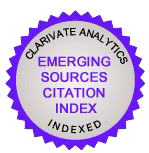Истоки и эволюция мифа о Достоевском
Palabras clave:
myth, reception, tradition, interpretation, structureResumen
The concept of «myth» in the article is used for the study of the functioning of cultural tradition.Firstly, it is a cultural myth, i.e tradition of perception, formulated in a complex image, which constitutes our understanding of the writer and affects on our interpretation of his works. During the writer`s lifetime the myth of Dostoevsky has absorbed his own activity and contemporary critical reactions. Its basis was the «complex of the Prophet», included Dostoevsky`s reactualization of Pushkin`s heritage. At the same time, at the birth stage, the myth has incorporated its own parodic variation into its structure. Internal contradictions led to the dynamism of the receptive tradition.
As a receptive artifact the myth of Dostoevsky in the XX century became both a material for creative activity, and the actor of influence on the national culture. From this perspective сases of denial or a radical rethinking of Dostoevsky’s heritage are more important for the understanding of functionig the national cultural memory.
Temporary domination of this negative receptive strategy in Soviet culture gave rise to a specific vector of «returning» to Dostoevsky, especially noticeable in the end of XX century. It exposes the main function of the myth: “Dostoevsky” in the twentieth century, on the one hand, became an ethical model for Russia, and on the other – a stamp of mass consciousness, which in turn gave birth to an influential tendency of denial and parodization.
The historical and literary perspective of Dostoevsky’s perception are homologous to the social and aesthetic transformation of Russian culture. The evolution of the myth of Dostoevsky can indicate changes and crises in cultural consciousness of the nation.
Descargas
Descargas
Publicado
Cómo citar
Número
Sección
Licencia
Los autores conservan los derechos de autor sobre sus trabajos y garantizan a la revista el derecho de ser la primera publicación del mismo. Los artículos se publican bajo la licencia Creative Commons Atribución-NoComercial 4.0 Internacional (CC BY-NC-SA 4.0), lo que permite a los lectores y otros investigadores copiar, redistribuir, remezclar, transformar y construir a partir del material, siempre que se respeten las condiciones establecidas.












